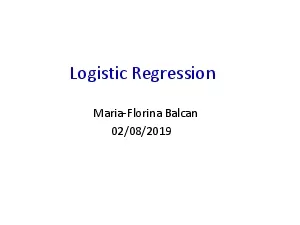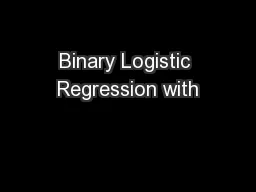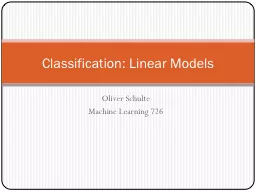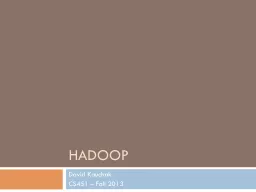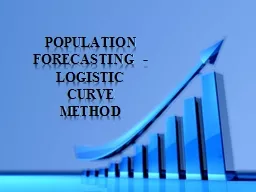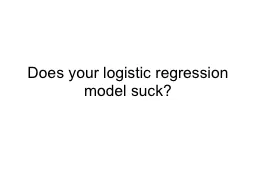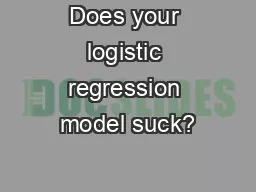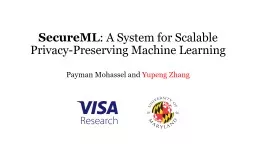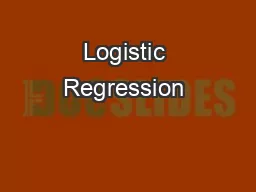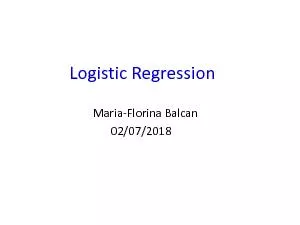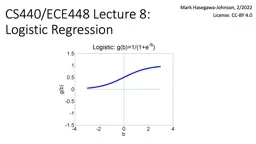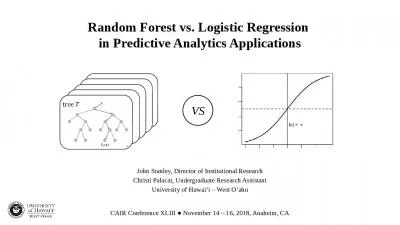PDF-Logistic Regression
Author : emery | Published Date : 2021-09-09
MariaFlorinaBalcan02082019Nave Bayes Recapx0099Classifier2x009Ax0095x009Bx0095yPx0099NB Assumptionx0099NB Classifierx0099Assume parametric form for PXx009DYand PYPXXdYidPXiYx009ANBx0095x009Bx0095yi
Presentation Embed Code
Download Presentation
Download Presentation The PPT/PDF document "Logistic Regression" is the property of its rightful owner. Permission is granted to download and print the materials on this website for personal, non-commercial use only, and to display it on your personal computer provided you do not modify the materials and that you retain all copyright notices contained in the materials. By downloading content from our website, you accept the terms of this agreement.
Logistic Regression: Transcript
Download Rules Of Document
"Logistic Regression"The content belongs to its owner. You may download and print it for personal use, without modification, and keep all copyright notices. By downloading, you agree to these terms.
Related Documents

